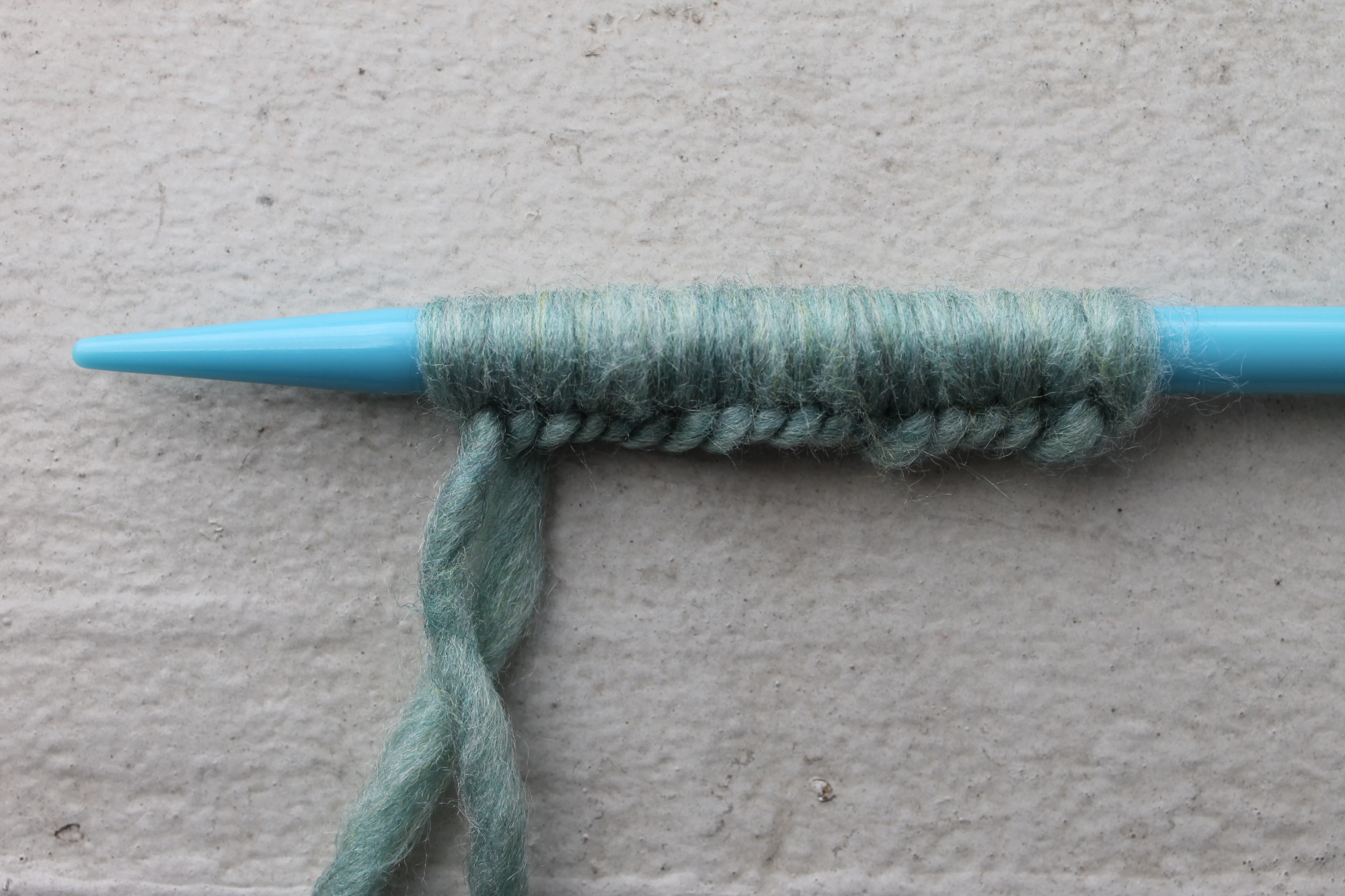Use these tricks to trouble shoot your too-tight cast-on.
 Use two size 2 needles to cast on for a pair of socks
Use two size 2 needles to cast on for a pair of socks
1. Cast on using two needles.
Place two needles together and cast on as usual. The second needle can be the same size as the needle you’re using for your project, or it can be a needle that’s smaller. I often find that if I’m casting on with a smaller needle, like a size 2 needle for socks, then putting two size 2 needles together to cast on works just fine. However, if I’m knitting with a larger needle, like a size 11, then I might stick a size 11 needle with a size 6 needle to cast on. Putting two large needles together can create the opposite problem, a cast-on that’s too loose!2. Cast on with a larger needle.
If your cast on is just a little too tight, consider going up a needle size for the cast-on, then switching back over when you’re ready to start your project. So for example, if you’re knitting a hat with a size 8 needle, cast on using a size 9 needle. Then switch back over to the size 8 needle when you start the first row. Can’t see your knitting needle between the stitches? Your cast-on is definitely too tight!
Can’t see your knitting needle between the stitches? Your cast-on is definitely too tight!

Share tips, start a discussion or ask one of our experts or other students a question.
No Responses to “Fixing Knitting Mistakes: 6 Easy Ways to Fix a Overly Tight Cast On”